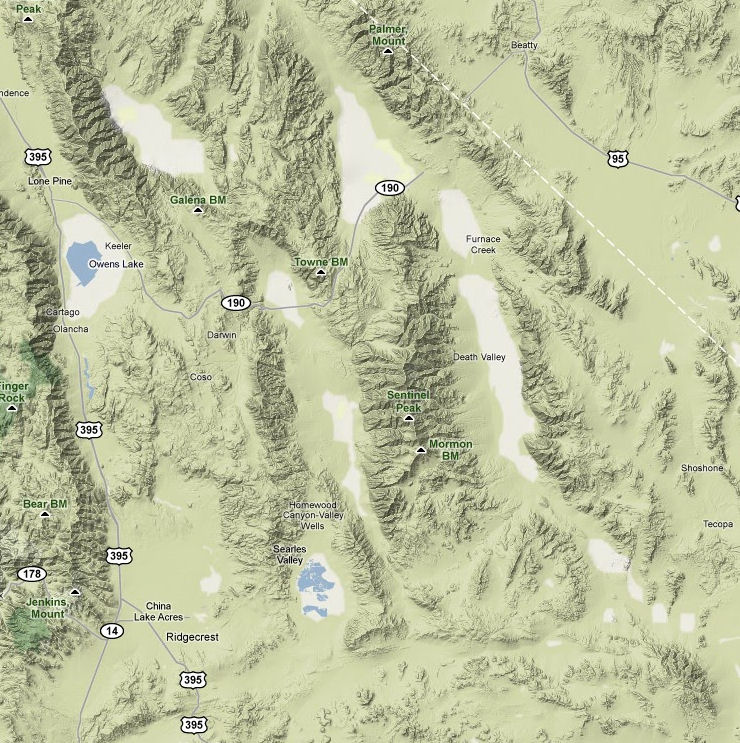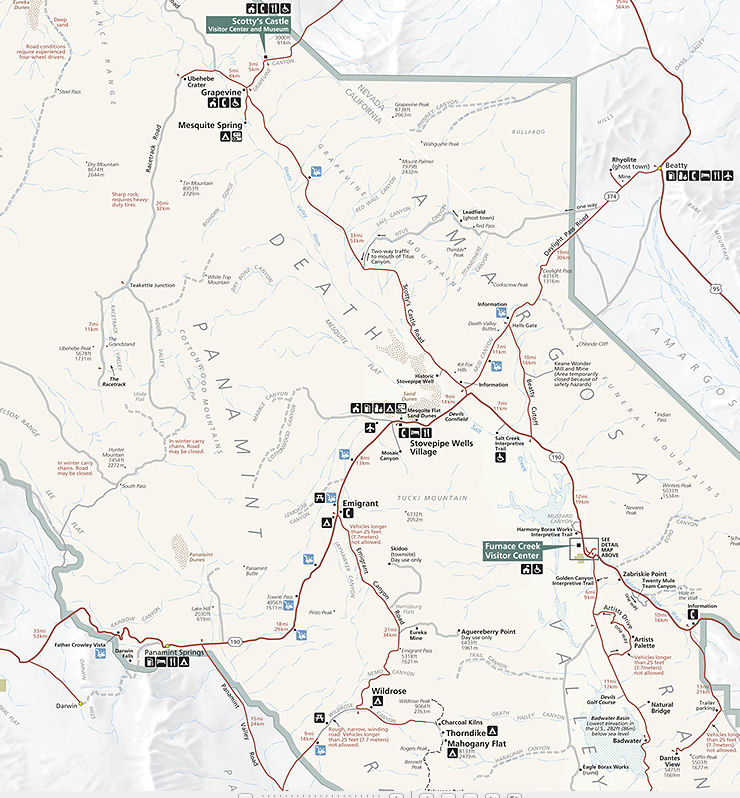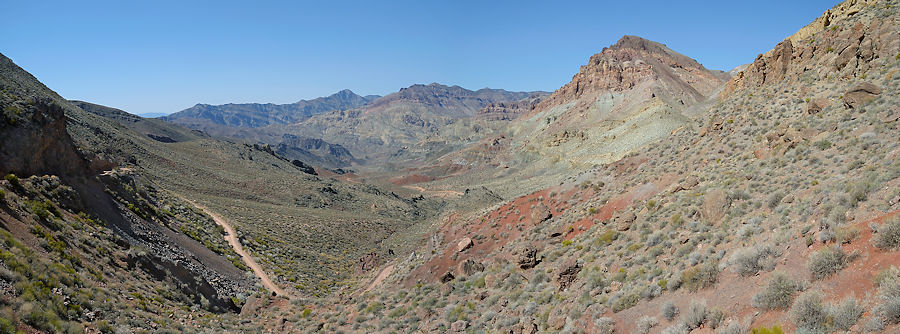Off the summit: Death Valley
At this time of the year there is a bit of a disconnect from life on the summit and the rest of California. As the first day of spring approaches, the summit is still deep in winter with 10-15 ft of snow still blanketing the area, while in the lowlands spring is beginning. Nowhere is this more true than in another area of extremes in California, Death Valley.
Spring is the best time to visit the desert landscapes of Death Valley where summer temperatures are 120°+ and below freezing in the winter. In the two short temperate months of March and April the desert explodes with life and the rich desert geological palette is alive with the colors of desert wildflowers. There are over 1000 species of plants in Death Valley, 50 of which occur only in the area. After a several months of winter on the summit with the predominant color in the area being white, a visit to Death Valley is a great way to reset your optical color palette while enjoying the warm weather.
Click on map for an interactive Google map

Death Valley is located on the southeast edge of California and as you would expect for a isolated area, it is remote. Getting there is pretty much a long drive from everywhere. Going from the summit area is a great scenic drive down my favorite highway in California and the US, Highway 395. This scenic highway winds down the east side of the Sierras in California and will be the subject of more articles in the future on this blog. At Lone Pine take a left at the Death Valley turnoff and drive another 100 miles on highway 190 to the park. This route parrallels the route of the Badwater-Ultramarathon, billed as the “world’s toughest foot race”. Make sure your gas tank is full at Lone Pine because facilities are limited until you reach Death Valley. Coming in from the east through the desert is a great introduction to the beauty of the valley. Start looking for wildflowers if you’re traveling in the spring.
Where to Stay: There are two choices for accommodations at the park, campgrounds and hotel/resorts. The Furnace Creek and Stovepipe Wells campgrounds are the largest and most centrally located and cater primarily to RVs. These are desert campgrounds and pretty much resemble parking lots. There are also more remote sites with more primitive facilities scattered around the park. The hotel/resorts are also located at Furnace Creek and Stovepipe Wells.
Click on map for interactive map
What to See: There are many online guides to Death Valley that are very informative. The FAQ at the National Park service site is excellent. Here I will just list some of the sites I really find interesting and would consider must see.
- Zabriske Point – This iconic spot is the ultimate desert landscape. Seeing it at sunrise and/or sunset is a must. The lighting changes all during the day so that it is good idea to visit it at different times of the day.
- Artist’s Drive – For truly amazing natural desert colors this scenic drive is stunning. Again, visiting it at different times of the day can affect the colors you see.
- Badwater – The lowest point in North America is just a place you want to put on your check list. As the 360° pano shows, this is a very desolate location.
- Mesquite Flat Sand Dunes – Walking among these huge dunes will complete anyone’s desert experience. The 360° pano shown here was at a beautiful desert sunrise.
- Salt Creek – This highly saline creek is the home of the Death Valley unique Pup fish. Definitely worth the walk.
- Scotty’s Castle – An impressive building accomplishment at the north end of the valley it is worth seeing.
- Ubehebe Crater – If you drive up to the north end of the valley this volcanic crater is even more impressive than Scotty’s Castle. In good wildflower years the black cinder gravel is carpeted with Sand Verbena.
There are many other sites to see, especially relating to the history of the valley. For the adventurous visitor I recommend a drive up Hwy 374 into Nevada to see the old silver mining ghost town of Rhyolite. While wildflowers are everywhere in the valley, the concentrations along Hwy 374 can be spectacular. And if you have a high clearance vehicle (preferrably with 4 WD if it is still wet) you might try the return dirt road down through Titus Canyon. This road is a picturesque drive through the Grapevine mountains that passes through Leadfield, another ghost “town” and the Titus Canyon which is an impressive slot through the mountains.
So if you are living on the summit and need a break from winter or you abide anywhere else, a spring visit to Death Valley is a beautiful and rejuvenating experience that is highly recommended.




Reached your website through AOL. You know I am subscribing to your rss.